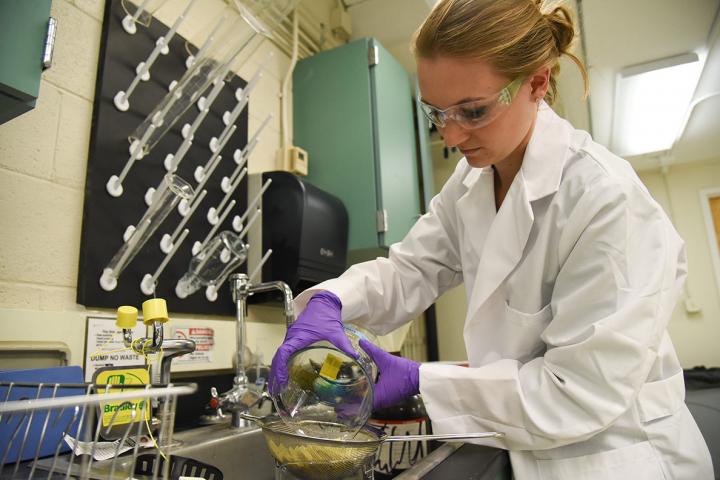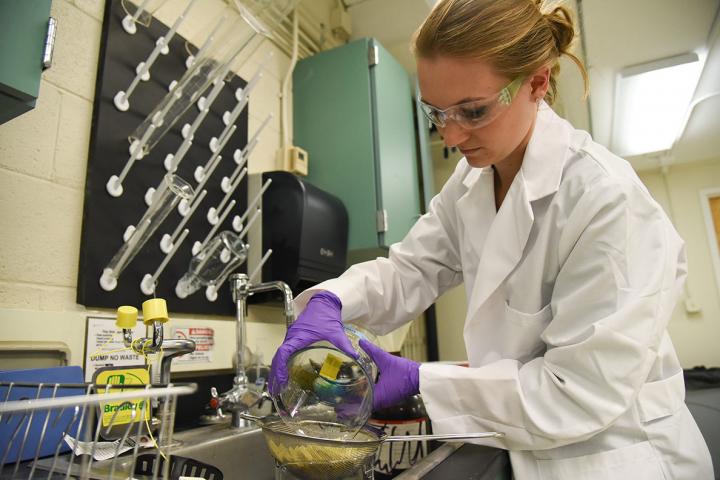
Credit: Washington State University
RICHLAND, Wash. – Transplanting fungi to restore native plant populations in the Midwest and Northwest is the focus of efforts by a team of WSU Tri-Cities researchers.
Mycorrhizal fungi form a symbiotic relationship with many plant roots, which helps stabilize the soil, conserve water and provides a habitat for many birds and insects, said Tanya Cheeke, assistant professor of biology. Some native plant species are more dependent on mycorrhizal fungi than invasive plant species. So, when that fungi is disturbed, native plants may not be able to compete as well with invasive species, disrupting the natural ecosystem of the environment and inhibiting many natural processes, she said.
Inoculate seedlings with microbes
"One way to improve native plant survival and growth in disturbed environments may be to inoculate seedlings with native soil microbes, which are then transplanted into a restoration site," Cheeke said. "We've been doing prairie restoration in Kansas for the past two years. Now, we're also doing something similar in the Palouse area in Washington."
Cheeke is working with a team of undergraduate and graduate students to complete the research. A group of her undergraduate students recently presented their project during the WSU Tri-Cities Undergraduate Research Symposium and Art Exhibition. Those students include Catalina Yepez, Jasmine Gonzales, Megan Brauner and Bryndalyn Corey.
The undergraduate team spent the past semester analyzing the spread of fungi from an inoculated soil environment in Kansas to see how far the fungi had spread into a restoration area. One year after planting, soil samples were collected at 0.5 meter, 1 meter, 1.5 meters, and 2 meters from the site of the inoculation in each plot. The samples were then tested for the presence of fungal DNA to see if the inoculated mycorrhizal species had reached the various distances from the inoculation points.
"The results will be used to inform ecological restoration efforts aimed at improving the survival and growth of native plants in disturbed ecosystems," undergraduate student Megan Brauner said.
Disturbed vs. pristine environments
Cheeke said they also are looking at how microbes change across gradients of disturbed environments compared to pristine environments.
"We want to determine the microbes that are present in pristine environments, but are missing from disturbed sites," she said.
Eventually, Cheeke said they would like to develop soil restoration strategies that other people can implement in their own environments.
###
Media Contact
Tanya Cheeke, assistant professor, biology
[email protected]
509-372-7393
@WSUNews
Original Source
https://news.wsu.edu/2018/05/10/use-fungi-to-restore-native-plants/




